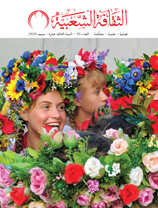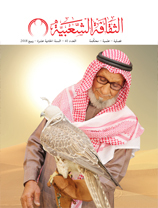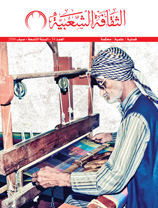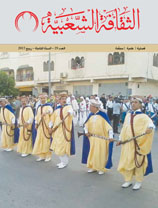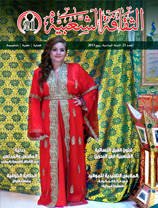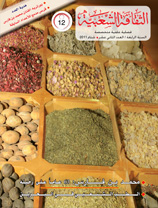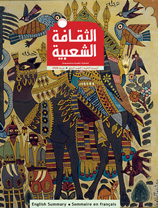Taming of Camels
Issue 8

Abdul Kareem Eid Al-Hashash (Syria)
The tamer brings strings and uses them to prepare a halter and a tight rope for the young she-camel to be tamed. He then gauges the halter against her head, sets the fire and puts an iron axle inside it. When the axle reddens, he picks it from the fire and pierces the nose of the shecamel. He inserts a twisted string of hair, fastens its ends, and replaces it with an iron loop, in which he bends the ring. When the burn heals few days later, the meeker takes the head of the she-camel, inserts it into the halter, and then pulls her while holding the latter. This process might take place with a great difficulty, namely if the she-camel had never been used to hold the leash around her head, so she starts to move her head up and down, diligently striving to get rid of the halter that surrounds her head for the first time. The tamer then takes her to a deserted valley, ties a wooden piece to the end of the halter and digs the land with his hands until his elbows disappear. He then inserts the wooden piece into the hole, pours down the sand on it while holding the halter, knocks continuously the hole with his feet, and firmly pulls up the rope to check its strength. If the rope had not been displaced, he realizes that the stall is solid and that the young shecamel was not able pull it out. The tamer has to watch over the shecamel from a distance to make sure that she did not twist or cut the rope or break her leg. The rope is kept tightened for a day. In the following morning, the meeker returns to the she-camel as he is the one who looks after her to get her used to follow his instructions. He finds her in the standing position. She goes around its rope, shaking head to get rid of the cuff that restrains her to the earth for the first time as before that she was free. The young she-camel is kept hungry for one week. The trainer unties the tight rope for a while to allow her breath easily. When the week is over, he takes her from that place. If she refuses to obey orders, he lets his assistant to push her from the back using a stick, despite that she is now hungry and skinny. He then prepares a fiber tie, fastens a coil of blankets and bags over her back and slits a bag lengthwise from the middle to create a saddlebag. He then fixes two loops in the upper edge of each eye of the saddlebag using two small stones that he wraps with the end of the bag and girths them with the rope of the loop. He now only has to put the eyes of the saddlebag on the coil over the she-camel’s back. The trainer maybe afraid that the young she-camel would not follow his orders for her to stand, to kneel down and to rise because when that happens, the she-camel cannot be tyrannized and domesticated again right away. This process has to be delayed until the winter next year, but in this case the she-camel would have been used to live in a miss despite that she had been oppressed and tamed. This is why the act of taming the camels is entrusted to the tough and strict man. Finally, the she-camel takes the hard test, when the tamer takes her to a remote valley out of the sight of people and shepherds, makes her kneel down and then hobbles her. He then pulls out a gun, fires gunshots over her neck while his feet are pressing on her knee, so she gets frightened and keeps her head low. He then rides her and fires bullets over her head while being on her back. She does not get scared, but her urine flows all along her feet, an indication that the training session was successfully accomplished.






















